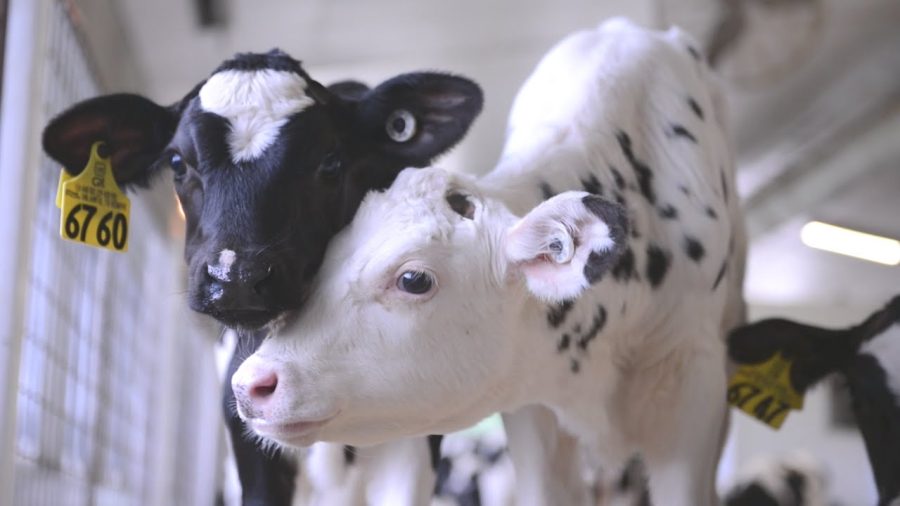Is your farm ready for the next downturn? Discover critical strategies to ensure survival, from planning and banker relationships to capital expenditures and succession planning.

In today’s unpredictable agricultural landscape, economic conditions are shifting rapidly. However, by prioritizing proactive planning, strategic decision-making, and building strong financial relationships, farmers can take control of their future. This empowerment is crucial for building a resilient foundation and ensuring long-term sustainability.
To navigate these complexities, farmers should focus on:
- Creating detailed farm plans
- Developing diverse strategic actions
- Building solid banker relationships
- Managing capital expenditures wisely
The next economic downturn will test the resilience of farm businesses and their leaders. Adequate preparation and strategic thinking are essential for long-term survival and success.
Strategic Planning: A Lifeline in Agricultural Volatility
Strategic planning is not just a tool, but a lifeline in the face of economic volatility in agriculture. It’s a roadmap that can guide farmers through uncertain times, distinguishing thriving farms from those merely surviving. A solid business plan, integrated with risk management, should outline operational and financial goals, while also predicting and mitigating potential risks such as market shifts, weather uncertainties, and changing regulations.
Flexibility and adaptability are key. The agriculture sector demands readiness to adjust strategies swiftly in response to market conditions. Pivoting crop choices based on price trends or adopting new technologies for better efficiency can be advantageous. Ag economist Gloy emphasizes leveraging positives like improved wheat economics and low interest rates. This nimbleness allows for regular evaluation and adjustment of decisions.
Partnering with an experienced agriculture lender experienced in economic cycles can also strengthen a farm’s resilience. These lenders provide valuable insights and advice, aiding farmers in navigating economic stress. Strategic planning aims to manage the present and build a robust framework for enduring future challenges, ensuring long-term sustainability in a constantly evolving environment.
Building Strong Financial Relationships: The Backbone of Agricultural Resilience
Amidst the complexities of navigating agricultural cycles, maintaining solid relationships with financial institutions provides a sense of security. Banks, as reliable partners, offer the necessary support to remain viable during economic downturns. By engaging in proactive and transparent communication, farmers can cultivate these relationships, fostering a sense of confidence in their financial stability.
Effective communication starts with mutual understanding and trust. Regular updates about your farm’s financial status, capital expenditures, and challenges demonstrate transparency. Use detailed financial reports and clear summaries.
Tips for Effective Communication:
- Be Prepared: Present a detailed financial plan with past performance data, current status, and future projections.
- Be Honest: Share both successes and challenges to build trust.
- Stay Informed: Understand market trends and their impact on your business.
- Regular Updates: Keep your banker informed through regular check-ins.
- Ask Questions: Discuss financial products and strategies to mitigate risks.
Presenting a solid financial plan during loan negotiations enhances your stability and attractiveness as a borrower. A well-documented plan with detailed budgets, cash flow statements, and risk management strategies demonstrates your preparation for economic uncertainties.
Strong banker relationships, underpinned by effective communication and solid financial planning, provide critical support, helping farmers sustain their operations through economic highs and lows.
Strategic Capital Expenditures: The Cornerstone of Agricultural Efficiency and Sustainability
Strategic capital expenditures are crucial for improving operational efficiency and sustainability in agriculture. Investing in modern equipment, advanced technology, and solid infrastructure is essential in an industry marked by cycles. Modern machinery and precision agriculture tools help reduce labor costs, optimize resource use, and boost yields. Upgrading infrastructure like irrigation systems and storage facilities enhances production processes. These investments streamline operations and strengthen the farm’s resilience against economic downturns, ensuring better financial stability.
Navigating Agricultural Turbulence: The Imperative of Self-Reflection and Goal Alignment for Emerging Leaders
Self-reflection and goal alignment are not just important, but essential for emerging farm leaders in the face of the agricultural industry’s undeniable oscillations. Regularly assessing performance is more than routine; it’s a vital step to ensure that daily actions align with long-term goals. In a volatile market, the ability to introspect and recalibrate is crucial, fostering resilience and innovation.
Self-awareness underpins continuous improvement. Emerging farm leaders must ask: Are my practices driving me toward my future goals? Am I learning from past experiences? This scrutiny fosters resilience and innovation.
Continuous improvement should permeate the entire operation, creating a culture that embraces change and seeks enhancement. Prioritizing self-improvement helps young leaders refine their skills and set high team standards.
Agriculture’s unpredictability demands that new leaders enhance their strategic acumen through consistent self-reflection. They can navigate adversity with clarity and purpose by aligning actions with goals.
Embracing Technological Advancements: The Imperative for Modern Farm Management
As the agricultural landscape evolves, younger farmers must leverage technological advancements. Social media and digital tools have become essential for modern farm management, providing opportunities to enhance marketing, expand networks, and streamline operations.
On the marketing front, platforms like Facebook, Instagram, and Twitter offer powerful ways to reach diverse audiences. Sharing engaging content and success stories builds solid brands and fosters consumer connections. This engagement boosts visibility and generates loyalty and trust, translating into sustained business growth.
Digital networking is equally crucial. LinkedIn and industry forums connect farmers with peers, mentors, and potential partners worldwide, facilitating valuable insights and best practices exchanges. Virtual events and webinars provide expert knowledge without geographical constraints, supporting continuous education and development.
Digital tools also enhance overall farm management. Precision agriculture technologies, such as GPS-guided equipment and data analytics, enable more efficient farming practices, optimizing resource use and improving yields. Additionally, digital record-keeping systems streamline administrative tasks, ensuring accurate documentation of farm activities and financial records.
In conclusion, integrating social media and digital tools is imperative for the next generation of agricultural leaders. By harnessing these technologies, younger farmers can drive their operations toward greater efficiency, sustainability, and profitability, strengthening the resilience of their businesses in an ever-changing industry.
The Symbiotic Dance: Balancing Personal Well-being and Business Demands in Farming
The balance between personal well-being and business demands is crucial in agriculture. This equilibrium supports both health and long-term productivity. The relentless nature of farming, with its cyclical pressures and seasonal peaks, often places farmers in a state of perpetual stress, potentially leading to burnout.
Managing stress and maintaining a healthy work-life balance are essential strategies. Setting clear boundaries between work and personal time, such as specific working hours, ensures time for rest and family. Incorporating physical activity and mindfulness practices, like meditation, can alleviate stress and improve well-being.
Open communication with stakeholders about workload and personal limits is another practical approach. Transparency fosters mutual understanding and can lead to valuable solutions, such as task delegation or adjusting work expectations during high-stress periods. Leveraging technological tools to streamline operations reduces manual labor and frees time for personal rejuvenation.
Seeking support from agricultural communities and professional networks can provide emotional and practical assistance. These connections offer platforms to share experiences, gain insights, and access resources to mitigate farm management pressures.
Ultimately, a balanced work-life dynamic is a strategic business decision. A well-rested and content farmer is likelier to make sound decisions, foster positive stakeholder relationships, and sustain their farm’s operations through the agricultural cycle’s inevitable ebbs and flows.
Succession Planning: Honoring Legacies While Paving the Way for Future Success
Due to its inherent complexities, succession planning in farm management demands clarity and patience. For many older generations, past experiences have ingrained a sense of caution. These seasoned farmers have endured economic downturns, market shifts, and unstable weather, contributing to their wisdom and occasional hesitation toward change.
The emotional impact of succession planning is significant. For the older generation, the farm is more than a business; it symbolizes their life’s work and legacy. Handing over control requires trust that the next generation is capable and respectful of the farm’s history and values.
Patience is crucial in this process. Younger leaders must exhibit empathy and understand the sacrifices and experiences of the current custodians of the land. Open and honest communication bridges generational divides, fostering a collaborative environment for a smooth transition.
A thoughtful succession plan preserves operational continuity and honors the legacy of those who maintained the farm through volatility. Farmers can ensure their enterprises remain resilient and future-ready by addressing both practical and emotional aspects.
Effective Communication: The Cornerstone of Resilient and Successful Farm Operations
Effective communication is essential for a resilient and successful farm operation, especially during challenging economic cycles. Open and honest dialogue builds a cohesive and adaptable agricultural enterprise.
Fostering Transparency and Collaboration:
- Regular Meetings: Hold frequent meetings to discuss operations, finances, and goals, ensuring everyone stays informed and involved.
- Set Clear Roles: Clearly define roles and responsibilities to enhance collaboration and accountability.
- Use Accessible Channels: Utilize group messaging apps or farm management software for real-time updates and feedback.
- Encourage Feedback: Create an environment where feedback is welcomed and acted upon using surveys or open forums.
- Be Transparent: Explain decision-making processes to build trust and alignment with farm goals.
- Resolve Conflicts: Implement precise conflict resolution mechanisms to maintain team dynamics.
- Invest in Development: Offer training to improve communication and collaboration skills, leading to a more competent workforce.
These practices create stronger teams and enhance daily operations, helping farms weather economic uncertainties and emerge resilient.
The Bottom Line
Proactive planning and strategic decision-making are crucial as we navigate the current economic landscape. Farmers must refine strategies, cultivate strong banker relationships, and invest wisely in capital expenditures to weather potential downturns. Embracing technology and balancing personal well-being with business demands help manage modern agriculture’s complexities. Effective communication within the farm and with external stakeholders is vital for resilience. Immediate action and self-reflection are essential for emerging leaders to align their goals and actions. Farmers can secure their farm’s resilience and long-term survival through diligent preparation and calculated decisions. The time to act is now.
Key Takeaways:
- Prioritize robust strategic planning to navigate market shifts and ensure long-term sustainability.
- Foster and maintain strong financial relationships with banks and lenders to secure necessary capital.
- Make strategic capital expenditures to enhance efficiency and sustainability through modern equipment and technology.
- Encourage self-reflection and goal alignment among emerging leaders in the agricultural community.
- Embrace technological advancements as critical tools for modern farm management.
- Balance personal well-being and business demands to maintain health and productivity.
- Implement a thoughtful succession planning process to honor legacy while paving the way for future success.
- Maintain open and honest communication to ensure resilient and successful farm operations.












